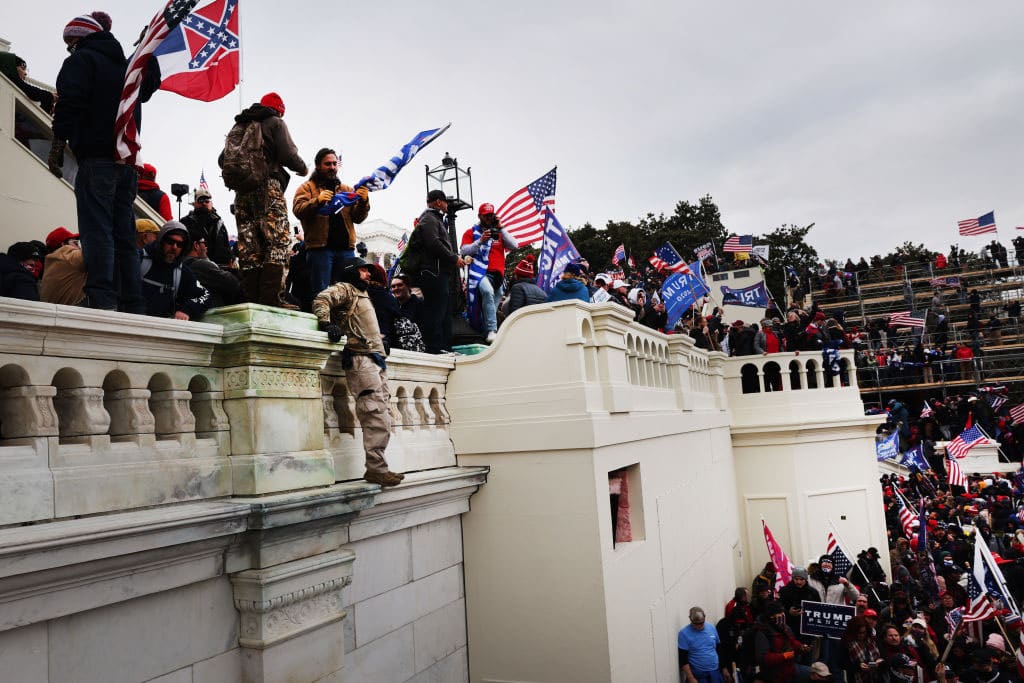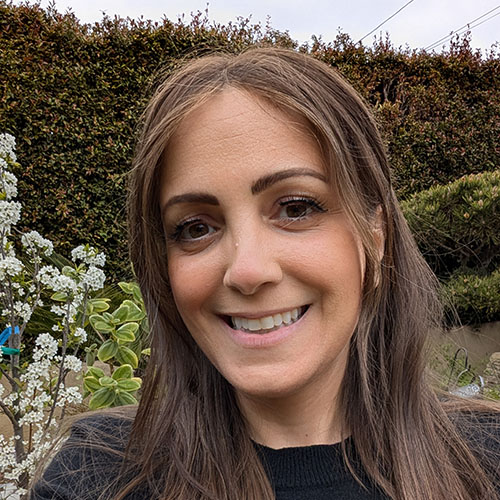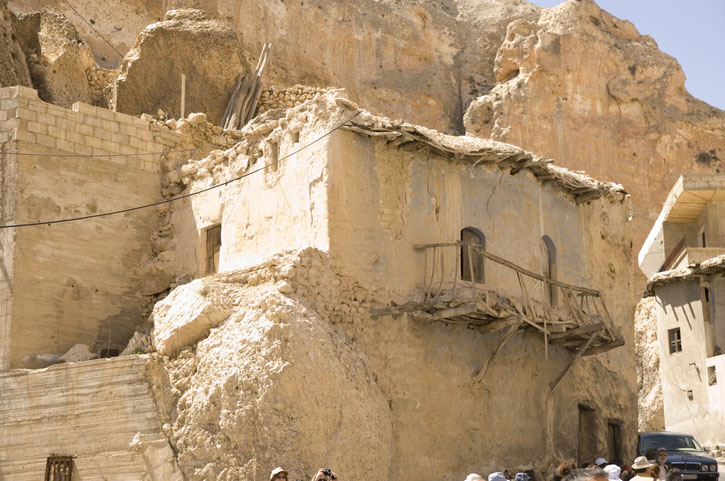
They breached the walls of the building in throngs. The seemingly smaller ones seemed to derive the sheer strength to scale the high walls through hatred and vengeance — a potent and, as it turned out, unstoppable source that propelled them forward and upward over the seemingly impenetrable.
They had made it to the other side. They were in.
This isn’t a description of the previously unimaginable breach of the United States Capitol Building by a violent mob on January 6. Rather, it describes the moment when fanaticized Iranians breached the gates of the U.S. embassy in Tehran in November 1979 and took over 50 Americans hostage, just ten months after a deadly revolution turned Iran into an oppressive theocracy.
I wasn’t even alive in 1979, but that image is ingrained in me, possibly from what I’m convinced is some genetically-inherited trauma from my mother and father, who lived through Iran’s Islamic Revolution. You know what other image won’t release me from its miserable clutches? The sight of radicalized men climbing over the walls of the Capitol building this month.
Three weeks ago, when it first happened, I wrote down some reactive thoughts but decided not to publish them, thinking my reaction was perhaps too visceral. This is America, I thought, and these bad events and feelings will pass. But three weeks later, I can’t get that image from the Capitol wall out of my mind. Worse, it keeps reminding me of the photos of Iranian fanatics in 1979.

The image of those rage-filled men in Tehran, breaching what was more than a wall, but a symbol of freedom and strength for millions (the American embassy), remains entrenched in the minds of the tens of thousands of Iranian immigrants and refugees in Los Angeles who were still in Iran during the revolution. Many of them, whether knowingly or unknowingly, suffer trauma from having lived through the nightmare of politicized fanaticism that resulted in the total upheaval of a land rendered wholly unrecognizable in the hands of tyrants.
There’s a reason why a freeway sign on the 405 North freeway near Westwood Boulevard reads, “Persian Square Next Exit.” Southern California is home to nearly 700,000 Iranians — the largest Iranian diaspora community outside of Iran. And many of us still need access to mental health professionals to help us heal from the trauma of violence and oppression — but that’s an issue for another column.
My family is among those refugees who thought we had left the nightmares of Iran back in, well, Iran.
“Please,” my father pleaded weeks ago when I showed him a photo of zealous men breaching the walls of the Capitol building in support of President Donald Trump, “I don’t want to see that.” Like millions who fled Iran after the revolution, my father never again saw his home, his land nor the members of his family who were unable to leave Iran. In fact, he lost nearly everything to bring his wife and two young daughters out of a place that seethed with despotism. “I already saw that once,” he said. “That’s not supposed to happen here.”
Here.
In America.
There were three remnants of our previous lives we thought we had left behind when we escaped Iran over 30 years ago: First, the mandatory hijab, or Islamic head covering that all females, whether five or fifty, and regardless of faith, were forced to wear after the revolution. Second, the oppressive stench of dictatorship, where the omnipresence of a self-espoused “supreme leader” even managed to breach the hallowed gates of our dreams, which soon became nightmares. And finally, the threat of a coup d’état. For many Iranian-Americans, the Capitol breach conjures trauma from a land we thought we’d left behind.
For many Iranian-Americans, the Capitol breach conjures trauma from a land we thought we’d left behind.
In 2019, I took my father to see Washington, D.C., for the first time. We toured the Capitol, and he was noticeably disappointed that he wasn’t able to see the Senate chambers. “That’s where they argue like civilized people, instead of practically hitting each other over the head like they do in the majlis (Iran’s parliament),” my father joked. A few minutes later, I watched as he held his breath while standing in the rotunda. “Dad,” I whispered, “This is where Abraham Lincoln and John F. Kennedy [had] lain in state.” He breathed deeply and looked at his shoes, as if overcome by the humility of his own redemption.
We then walked toward a statue of Rosa Parks, and the tour guide announced that she had laid in honor in the rotunda — the same space where, a few weeks ago, tear gas was dispersed and where, close by, in another room, a man proudly walked around the portrait of an abolitionist while waving a huge Confederate flag.
The Capitol is like hallowed ground for my family and me. It was there, in 1980, that Congress passed the Refugee Act, which granted us the most important blessing of our lives: protected admission into the United States. If I could, I’d get the words “Admitted as protected refugee” (which are stamped on my Iranian passport) tattooed on my forehead.
In the decades that passed, our community thrived in this country. And like many immigrant communities, it’s hard to peg Iranian Americans into neat political categories. Many from the older generation, who still remember the revolution (and still haven’t forgiven President Jimmy Carter for his role in the overthrow of the former Shah of Iran), lean to the right, especially when it comes to strong foreign policy against Iran and the regime’s unsatiated pursuit of nuclear weapons.
But there’s a younger generation — mostly American-born — who embraces progressivism as the ultimate confirmation that the traditionalism of Iranian society that’s been ingrained in our community needs to be buried, and quickly. As for me, I’m in my thirties and lean somewhere in between. My fears about an emboldened Iran are beyond the realms of individual presidents and partisan politics. I’ve been worried about Iran for 25 years.
But as a former child refugee from post-revolutionary Iran, I can assert with confidence that what is highest on the list of fears that terrify and re-traumatize our community in the United States is the threat of radicalized people. We’re not afraid that a “supreme leader” will simply take the reins of power in a country like America; we’re biting our nails over the prospect of who will support and enable such a person to radically change this country. Who would carry out the leader’s directives? Who would turn against ordinary citizens? And for people like my father, who were in their twenties and thirties when five million joyous Iranians foolishly greeted Iran’s revolutionary leader, the Ayatollah Khomeini, in Tehran when he returned to the country after a fifteen-year exile, there remains just one question: Who will wake up one morning and take their radicalism too far?
I’m not suggesting that America is about to morph into Iran. And I’m not one of those Americans who’s dusting off the old passport and anticipating greener pastures in Canada or anywhere else. I’m staying right here. But as an Iranian American, I’m following the trends of radicalism in this country with a combination of uneasy concern and with a certain unrelenting awe for the good, decent and nuanced people of this country.
It’s not easy. Sometimes, it’s downright infuriating, especially when despots like Ayatollah Ali Khamenei, Iran’s supreme leader, respond to the carnage at the Capitol by ridiculing “American values” and declaring that the incident was “God’s revenge” against the United States for having sewn instability in the Middle East.
Khamenei, too, seems to have been impacted by images from America. As if there isn’t enough fanaticism and unrest in his own backyard about which to tweet. But that’s the thing about images. Some of them — like fanatics breaching the Capitol Building wall in 2020, jubilant Americans hugging during victory parades in 1945, or the upside-down man,with one leg bent like a dying flamingo, falling from the World Trade Center in 2001 — stay with you forever.
A seed seems to have sprouted over the past few years. Perhaps it had been there all along, deep beneath the soil, and simply needed the nourishing rains of militant speech and nods and winks at the highest level to make it sprout. After what we saw on January 6, there’s only one thing that I and thousands of others like me want to see climbing over the venerable walls of our Capitol: some good old ivy, nourished by the moderate rains of our nation’s capital.
Tabby Refael is a Los Angeles-based writer, speaker and activist.
























 More news and opinions than at a Shabbat dinner, right in your inbox.
More news and opinions than at a Shabbat dinner, right in your inbox.